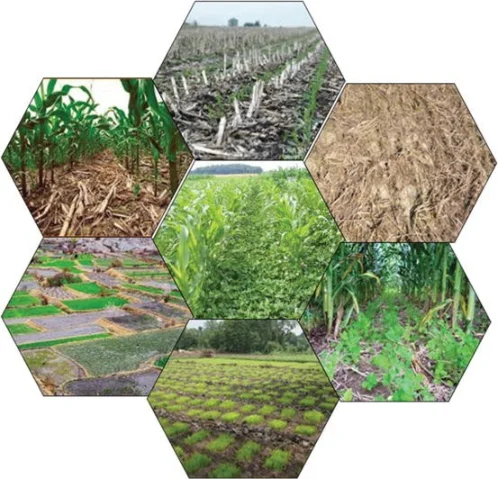Are you a farmer or a gardening enthusiast looking to maximize your crop yields while maintaining soil health? Look no further! In this blog post, we’ll delve into the fascinating world of Intercropping, a smart agricultural technique that can revolutionize the way you grow your plants.
Whether you have a small backyard garden or a vast farmland, it offers benefits that are too good to ignore.
What Is Intercropping?
Intercropping, also known as companion planting, involves growing two or more different crops together in the same field or garden space. Unlike monoculture (where a single crop dominates an area), promotes diversity and It’s like hosting a plant party where everyone brings something unique to the table.

Benefits of Intercropping
Increased Yield
By combining complementary crops, you can achieve higher overall yields. Some plants work together like the best of friends. For instance:
Nitrogen-fixing legumes (such as peas or beans) team up with other crops by enriching the soil with nitrogen. This nutrient boost benefits neighboring plants.
Tall sunflowers provide shade for shorter plants, preventing excessive evaporation and creating a microclimate that encourages growth.
Pest Control
Intercropping disrupts the party for pests! When you mix different crops, insects and diseases find it harder to locate their favorite snack. For example
Marigolds emit natural chemicals that repel nematodes (tiny soil-dwelling pests).
Basil acts as a bodyguard for tomatoes, deterring aphids and whiteflies.
Soil Health
Healthy soil is the backbone of successful farming. It contributes to soil health in several ways:
Root diversity: Different crops have varying root structures. Some go deep, while others spread wide. Together, they improve soil structure and prevent erosion.
Nutrient cycling: Each crop has unique nutrient requirements. It ensures efficient nutrient utilization, reducing the need for synthetic fertilizers.
Weed suppression: A well-chosen intercrop can outcompete weeds, minimizing the need for herbicides.

How to Get Started
| Main Ways | Description |
|---|---|
| Choose Compatible Crops | Select crops that play well together. Consider growth rates, root depths, and nutrient needs. |
| Design Your Layout | Arrange crops strategically. For instance, plant tall corn alongside low-growing squash. |
| Timing Matters | Coordinate planting and harvesting times. Avoid overcrowding or competition. |
| Observe and Adapt | Monitor your intercropped garden. Adjust as needed based on performance. |
Conclusion
Intercropping isn’t just about plants, it’s about fostering a harmonious ecosystem. So, grab your gardening gloves, mix up those seeds, and let your garden thrive. Remember, it is not just a buzzword; it’s a sustainable practice that benefits both your harvest and the planet.
Read More:
What Is O Farming: Make Money Online, Get Start & Benefits
Palworld Farming: How To Grow And Harvest Food With Your Pals
O Farming Investing: Online Platform, Higher Returns & Low Risks
Precision Farming: Revolutionizing Agriculture For A Sustainable Future
Perennial Crops: Best Examples & Benefits Of Growing Food That Lasts
Drip Irrigation: A Water-Saving Marvel For Your Garden
How To Grow Pomegranate From Cuttings: Major Steps, Tips & Tricks

Meet Our Expert Agricultural Administrator
Welcome to agrigreenhands.com, your dedicated hub for all things related to agricultural farming. Leading the way in our commitment to sustainable and innovative practices is Jawad Hussain, our esteemed administrator with a profound background in agriculture….


